Lets Talk Travelling Australia with Trip In A Van
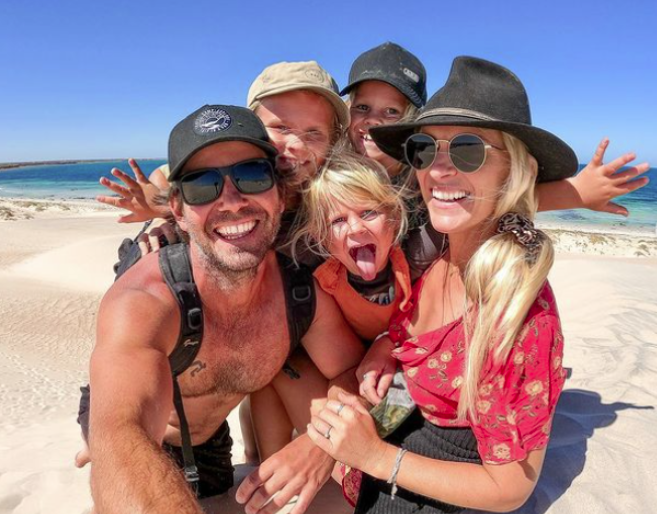
These days, more people are deciding to have a lifestyle change by selling up, buying a caravan, and hitting the road. With all this touring around Australia, some are considering a long range tank. We reached out to Justin and Bec from Trip in A Van who have the Long Range Automotive 170L Sub Tank Replacement in their chopped Toyota Landcruiser 200 Series. This tank replaces the standard 45L sub tank and increases it to a 170L capacity, which gives you a total of 263L. We asked the travelling couple, a few questions to give us a bit of feedback about the tank they have in their ultimate tourer, here’s what they had to say.
WHY BUY A LONG RANGE TANK?
When it comes to purchasing a long range tank, many people toss up whether it’s worth spending the money or should they just stick to jerry cans. We asked Bec and Justin when do they find the long range tank most helpful? They said they bypass expensive fuel to find it cheaper in the next major town but also said “the long range tank comes into its own when remote touring. Having the ability for extended travel with the confidence that you have plenty of fuel to explore along the way is fantastic”. Many people have their own reasons for purchasing or not purchasing a long range tank, but Justin and Bec wanted the tank for the extended remote touring. They said that without the long range tank they had “skipped visiting certain places because we didn’t have the ability to cover the required distances with our fuel capacity.” Whilst it’s true you can carry extra jerry cans, Justin says it was a big win for them, not having to refill on the side of the road.
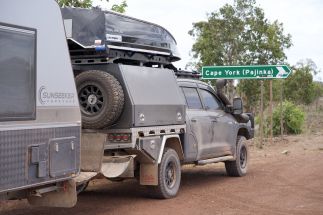
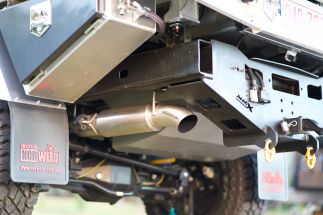
VEHICLE WEIGHT AND FUEL ECONOMY
When it comes to towing weights and vehicle GVMs, people can tend to forget to factor in the extra weight of a long range tank and the fuel it holds, when asked if they factored this into their 200 Series build Justin says “the total weight of our build was always the forefront of the planning. To be able to travel full time and carry all the gear we do, requires a lot of research.” It is definitely important to do your research on vehicle towing capacities, GVM and GCM before committing to purchase a long range tank or any other aftermarket accessory of any kind.
When traveling and pulling into a camp for the night, you get chatting to people and a popular topic between caravaners is FUEL ECONOMY! Some people track their fuel usage, others don’t want to know, so we asked Justin and Bec if that’s something they look into, “we do track our fuel economy, yes, but only an averaged figure on our total kms driven. We are super happy with it. We average around 26L/100km which to us is a great result as we have a combined weight of around 8.2 tonne.” Now that is impressive for the weight they have.
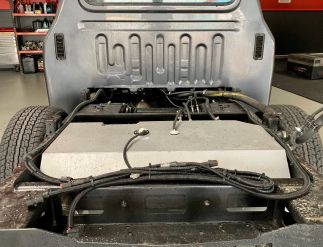


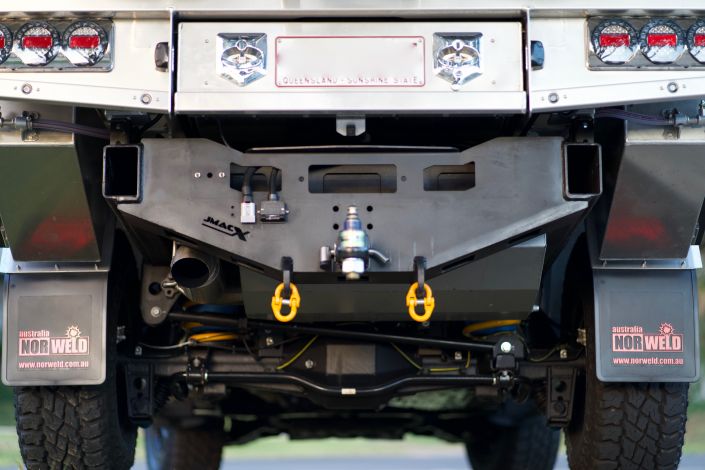
UH OH MOMENT?
Some people don’t know how much fuel they have left in the tank when that low fuel light comes on the dash or perhaps people have pushed the limits to find out, we asked the Bec and Justin if they have ever had an ‘uh oh’ moment when it comes to running low on fuel... “ahhh yep” they say, “when we first got the cruiser and we wanted to test the touring range we did run out of fuel yeah…it wasn’t planned to totally run out but we needed to learn exactly when empty was on the cruiser gauge as the fuel level sensor is in the factory 93L tank and the fuel is moved across via a transfer pump. It was all good as I did have a jerry can of fuel so we could top up”.
For those who are wondering how this system works on this particular set up, the 200 series has a sender unit in each tank feeding into one fuel gauge. When the 45L sub is changed to our 170L and when the tanks are full this is represented by the top 1/3 of the fuel gauge and the 93L in the main tank is represented by empty to 2/3 full. As you begin to drive the factory Toyota jet transfer pump in the main 93L tank will transfer the fuel at the rate the engine is using it from the 170L sub replacement into the main tank. Once the fuel gauge is showing between ½ and 2/3 full the 170L will be empty and you will have the 93L in the main tank to use with low fuel light and DTE operating as it would after the original sub tank was empty. So, it needs to use the 170L before the fuel gauge goes below 2/3.
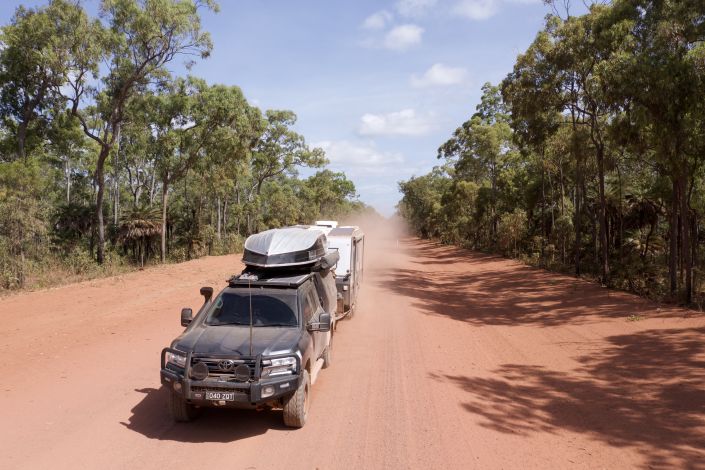
THEIR FINAL SAY?
There are plenty of options out there for long range tanks, so our final question to Bec and Justin was, are you happy with the LRA tank and guess what? They are! Their response was, “totally happy with it. The main reason we went with an LRA tank was research and talking to other travellers who’ve used long range tanks. There was a lot of stories about different brand tanks having issues like cracking and mounting brackets failing but all reviews on the LRA tanks were positive. We have done 30,000kms touring in the new rig and it has performed brilliantly on the roughest roads in the country. Cape York, The Oodnadatta, and the Central Arnhem Road. We couldn’t be happier.”
Justin, Bec and their kids have travelled Australia permanently for a few years now and it has been great to hear their Long Range Automotive tank has performed well for them since having it installed.
Want to follow Justin, Bec and the kids on their adventures? You can find them on Facebook, Instagram and YouTube or head to their website.
Want more information on a tank that is available for your vehicle? Use the search tool on the LRA Products page to find a tank suitable and get a quote today!
What's New
Long Range Automotive
23 Industry Court, Lilydale VIC 3140 Australia
PH: +61 3 9739 5667



